
It allows to keep PV going, with more focus towards AI, but keeping be one of the few truly independent places.
-
Sensor 1 - 60MP CMOS FF, 16 channels
- 60MP 4.6FPS@16bit
- 60MP 12FPS@14bit
- 8k30P@12bit
- 8K60p@10bit
- 4k60p@12bit
- FHD 300P@10bit
Sensor 2 - 36MP CMOS FF
- 36MP 10FPS@16bit
- 36MP 60FPS@10bit
- on-chip PDAF
Both offer
- Weighted pixel binning for less aliasing
- Dual-gain ADC mode (aka dual ISO) improve the dynamic range by almost 2 stops at high ISO. 1/2 sensor speed if use it.
- Digital Overlap HDR
via sonyalpharumors
-
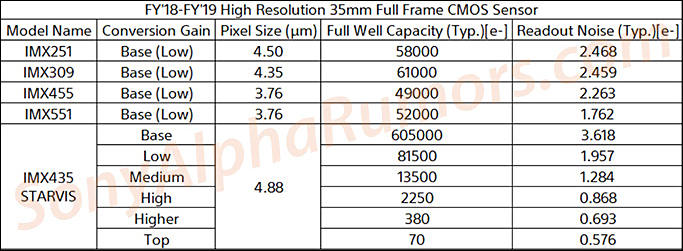
The star of the show IMX435 sensor has 6 native sensitivities (from base to top as seen in the table):
- ISO 50 = Conversion Gain -18dB, EI +12dB, DR 17.4EV
- ISO 200 = Conversion Gain 0dB, EI +6dB, DR 15.4EV
- ISO 800 = Conversion Gain +18dB, EI 0dB, DR 13.4EV
- ISO 12800 = Conversion Gain +36dB, EI +6dB
- ISO 102400 = Conversion Gain +54dB, EI +6dB
- ISO 1638.4K = Conversion Gain +72dB, EI +24dB
Its full well capacity at base is particularly impressive at 605k e-, A7SII sensor IMX235 is “only” 159K e- with much bigger photosite. This again highlights the power of Exmor RS.

 sa6142.jpg683 x 251 - 53K
sa6142.jpg683 x 251 - 53K -
IMX455 is a stripped down version of the 60MP IMX551
- Effective pixels: 9600×6400
- Recommend recording pixels: 60MP
- 11/12/14/16Bit ADC
- Full Pixel 9fps/14Bit ADC
- SLVS-EC 8Lane
- Single ADC in Video Mode
- 12-ADC in Still Picture Mode
- Native ISO 64/400

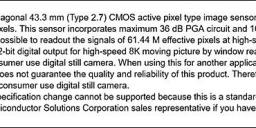
 sa5925.jpg677 x 185 - 43K
sa5925.jpg677 x 185 - 43K -
Interesting here is - Scalable Low Voltage Signalling with an Embedded Clock (SLVS-EC)
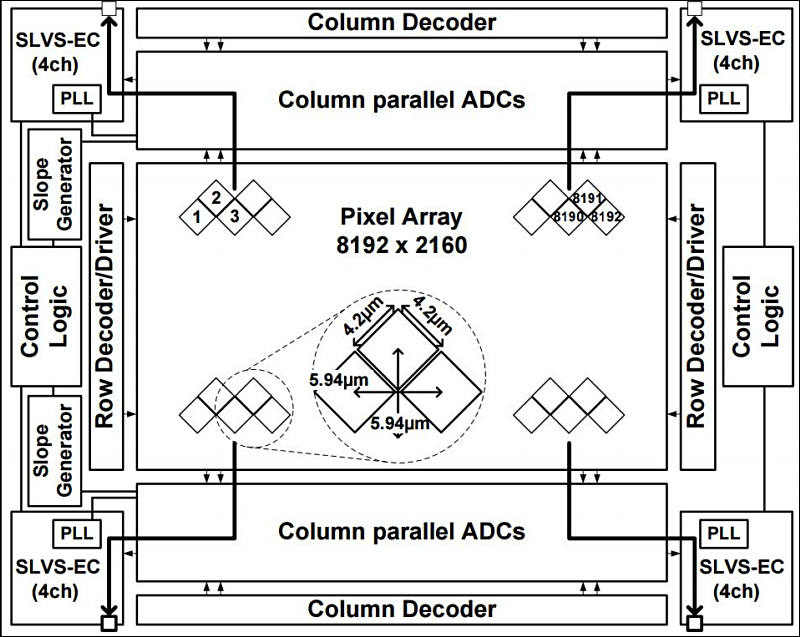
In SLVS-EC, the clock signal is embedded in the data and recovered by dedicated circuitry on the receive side. Since the signals are then less sensitive to skew, the data can be transmitted at much higher data rates and over much further distances. Each of the SLVDS-EC channels can support speeds of up to 2.304Gbit/sec. The result is that a sensor that supports the new standard will be able to transfer data over eight links at a data rate of 1.84GBytes/sec (80% of full bandwidth due to 8b10b encoding).

 sa5895.jpg800 x 637 - 95K
sa5895.jpg800 x 637 - 95K -
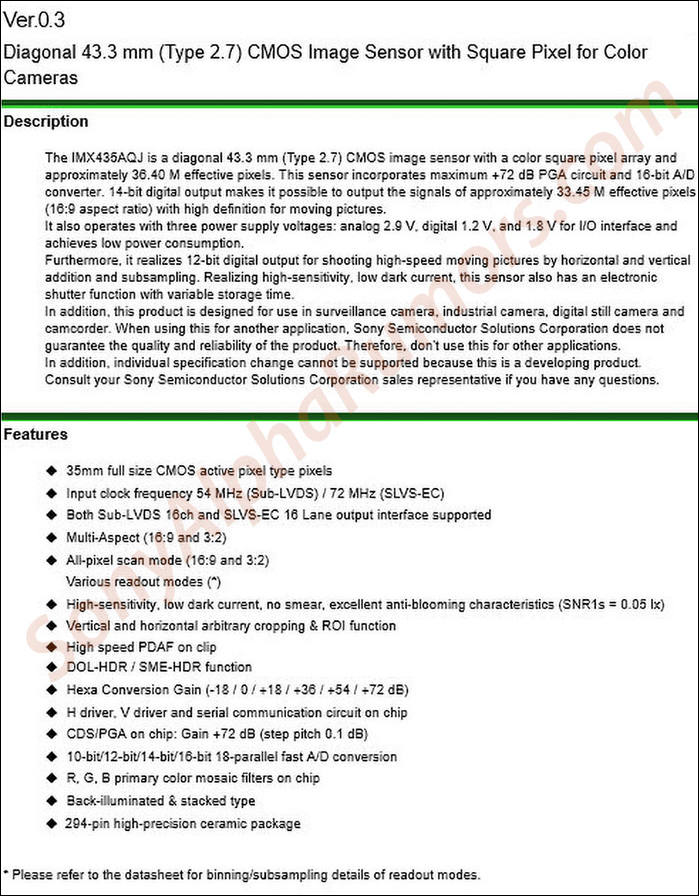
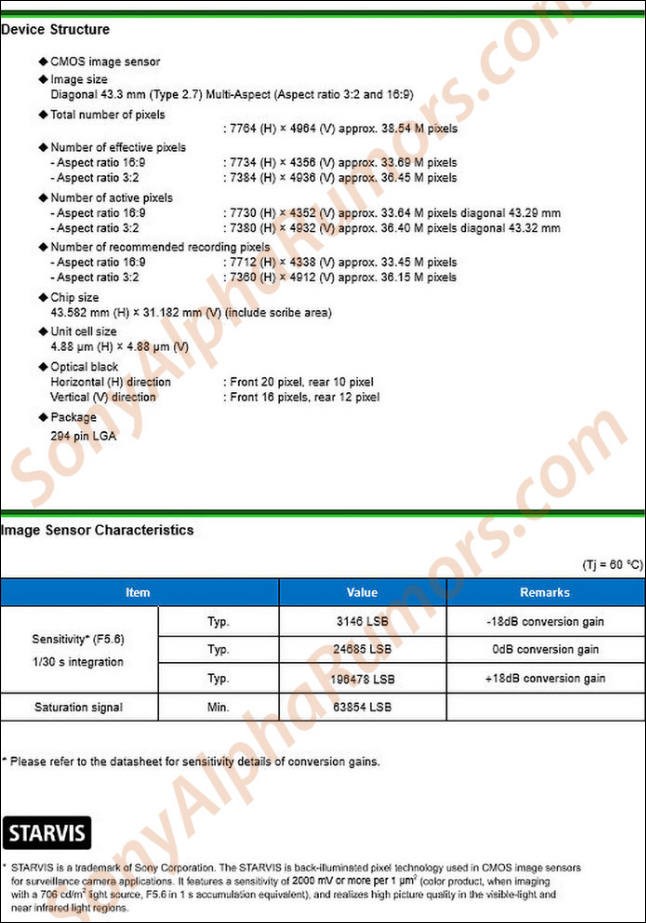
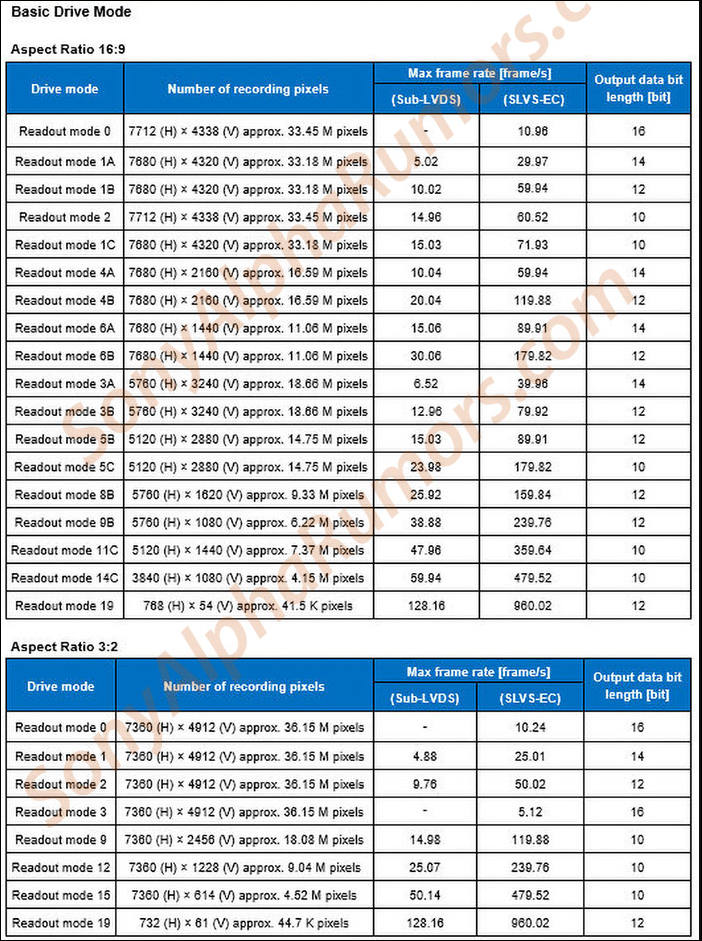

 sa5892.jpg699 x 896 - 130K
sa5892.jpg699 x 896 - 130K
 sa5893.jpg646 x 923 - 96K
sa5893.jpg646 x 923 - 96K
 sa5894.jpg702 x 941 - 181K
sa5894.jpg702 x 941 - 181K -
It's an interesting comparison.
Thing is, 8k would be grate for post production, punch in like in 4k. But Better. In the end, it's all same thing. Final delivery Will be fucked up by client, or anyone who Is willing to make a difernce. We are now in the Holly grail of stupidity.
Like china post you make about social rating. It's crazy shit. Now who Is fucked Will be for Ever, untill dead. This is like old civilisations era. Slave, untill you die.
-
I just wish camera companies won't repeat history of DVD-Audio players manufacturers. Sad history.
And 8K is similar to 96/192K audio, meaning that on normal 65-75" sizes you can't see difference.
May be folding oled will save 8K, but not sure how many camera manufacturers will survive to this days.
-
Now we are talking.
Howdy, Stranger!
It looks like you're new here. If you want to get involved, click one of these buttons!
Categories
- Topics List23,992
- Blog5,725
- General and News1,355
- Hacks and Patches1,153
- ↳ Top Settings33
- ↳ Beginners256
- ↳ Archives402
- ↳ Hacks News and Development56
- Cameras2,367
- ↳ Panasonic995
- ↳ Canon118
- ↳ Sony156
- ↳ Nikon96
- ↳ Pentax and Samsung70
- ↳ Olympus and Fujifilm101
- ↳ Compacts and Camcorders300
- ↳ Smartphones for video97
- ↳ Pro Video Cameras191
- ↳ BlackMagic and other raw cameras116
- Skill1,960
- ↳ Business and distribution66
- ↳ Preparation, scripts and legal38
- ↳ Art149
- ↳ Import, Convert, Exporting291
- ↳ Editors191
- ↳ Effects and stunts115
- ↳ Color grading197
- ↳ Sound and Music280
- ↳ Lighting96
- ↳ Software and storage tips266
- Gear5,420
- ↳ Filters, Adapters, Matte boxes344
- ↳ Lenses1,582
- ↳ Follow focus and gears93
- ↳ Sound499
- ↳ Lighting gear314
- ↳ Camera movement230
- ↳ Gimbals and copters302
- ↳ Rigs and related stuff273
- ↳ Power solutions83
- ↳ Monitors and viewfinders340
- ↳ Tripods and fluid heads139
- ↳ Storage286
- ↳ Computers and studio gear560
- ↳ VR and 3D248
- Showcase1,859
- Marketplace2,834
- Offtopic1,319




